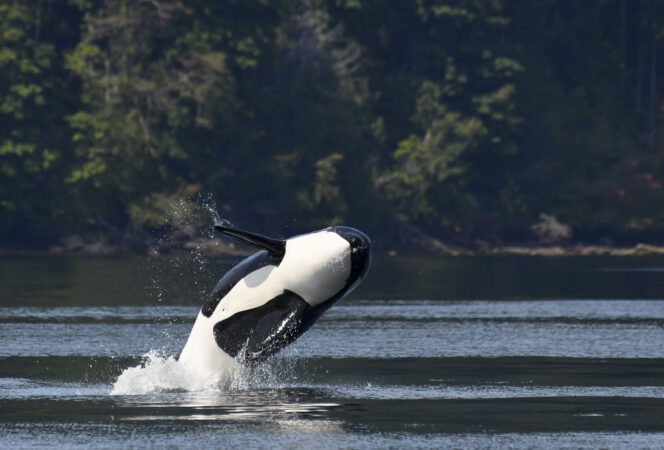
A Bigg’s killer whale breaches. Photo: Ashley Keegan/Wild Whales Vancouver
With hundreds of whales migrating through its waters, Vancouver is one of the best places to go whale watching.
When is Whale Watching Season?
While you can see whales in Vancouver year-round, peak season is between March and October. The whales follow their prey around the region so there is no “best” time of day or month to go during the season. Tour operators use radios to communicate with each other and with spotters to help find the best wildlife sighting locations each day. Each day on the water is different since the whales go where they please.
Which Whales (and Marine Animals) Can You See?
Most visitors come to see the famous orcas (killer whales). You are most likely to encounter Bigg’s killer whales (formerly known as transients). They feed on marine mammals like seals, sea lions and porpoises. Salmon-eating orcas, known as the Southern Residents, can also be seen off the coast of Vancouver. But with only 74 whales remaining, this group is endangered and is not the focus of whale watching tours.
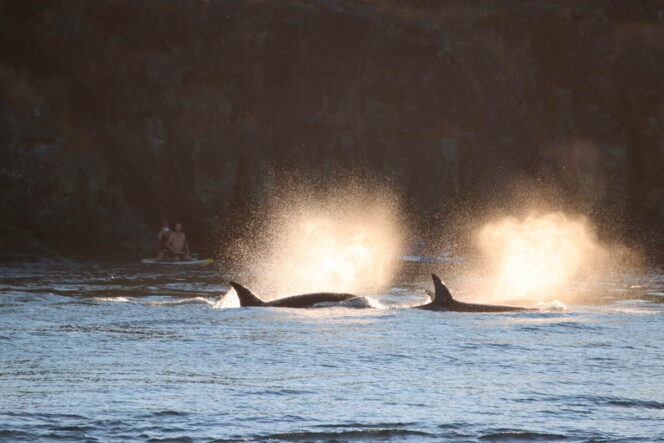
Orcas. Photo: Destination Vancouver/Prince of Whales Whale Watching
Humpback whales also feed in Vancouver’s waters in the spring, summer, fall as part of their annual migration. But some humpbacks hang around Vancouver all year. While they are less common, it’s also possible to spot grey whales and minke whales.
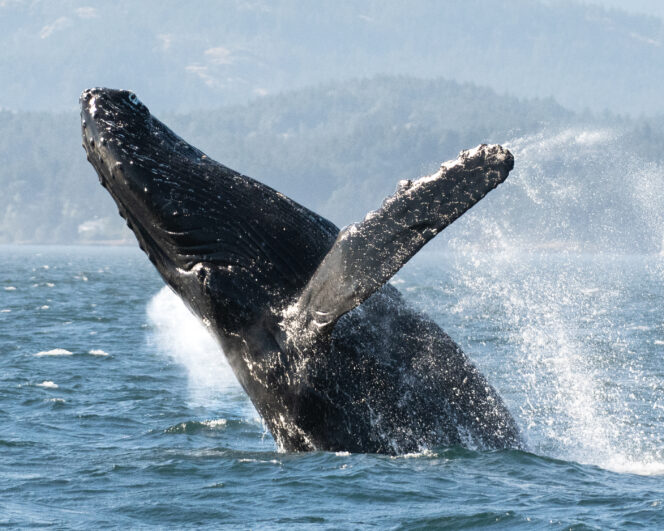
Humpback whale. Photo: Sierra Hamilton/Eagle Wing Tours
And even if the whales don’t show up, you can still see lots of marine life. Curious seals and sea lions lounge on rocks. River otters and mink frolick across rocky shorelines. Porpoises dance through the waves in huge pods. Bald eagles perch on treetops. And rafts of surf scoters and other sea ducks bob in the waves.
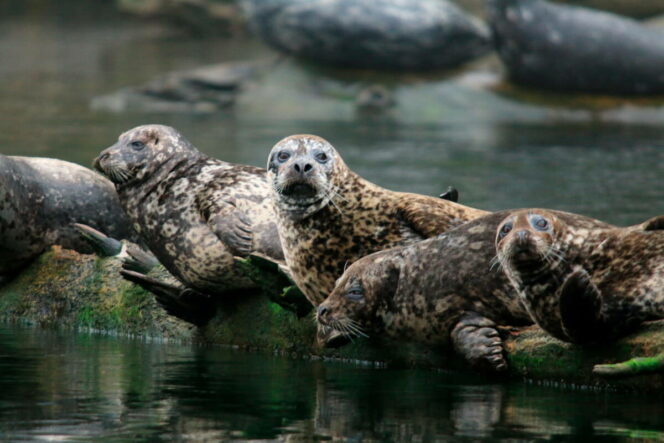
Curious harbour seals. Photo: Destination Vancouver/Prince of Whales Whale Watching
How to Go Whale Watching Responsibly
Vancouver’s whale watching tour operators focus on marine education, conservation, and responsible viewing. On-board guides help guests learn about the wildlife they are seeing as well as the surrounding ecosystem. Some tour companies also donate a portion of their proceeds to conservation organizations that work to preserve marine life.
Since 1994, whale watching companies with the Pacific Whale Watch Association have helped to pioneer responsible whale watching standards in BC to minimize negative effects on the whales. These include guidelines for minimum distances, reduced boat speeds, and engine shut-offs or idling when whales are in the area. The Canadian government formally adopted these standards into the federal Marine Mammal Regulations in 2018 to ensure whales and other marine mammals are treated responsibly and with respect.
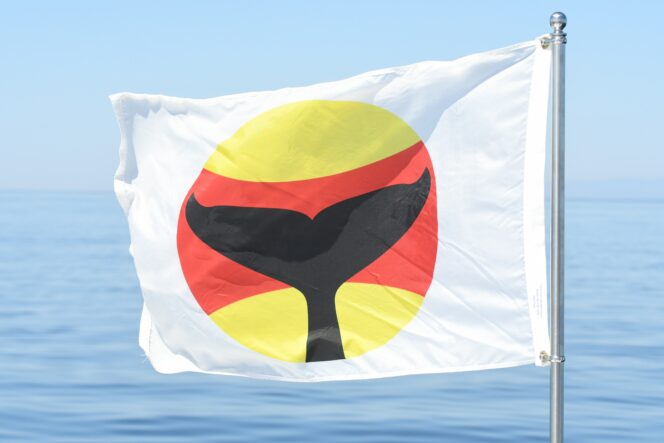
The Whale Warning Flag warns boaters that whales are nearby so the can use caution and follow Marine Mammal Regulations. Photo: Pacific Whale Watch Association.
How to Choose a Vancouver Whale Watching Tour
There are lots of options for whale watching tours. If you want to experience the elements in an open boat, choose a small inflatable Zodiac tour. These boats only take small groups so they provide a more intimate view of the wildlife and a smaller guest-to guide-ratio. from Vancouver.
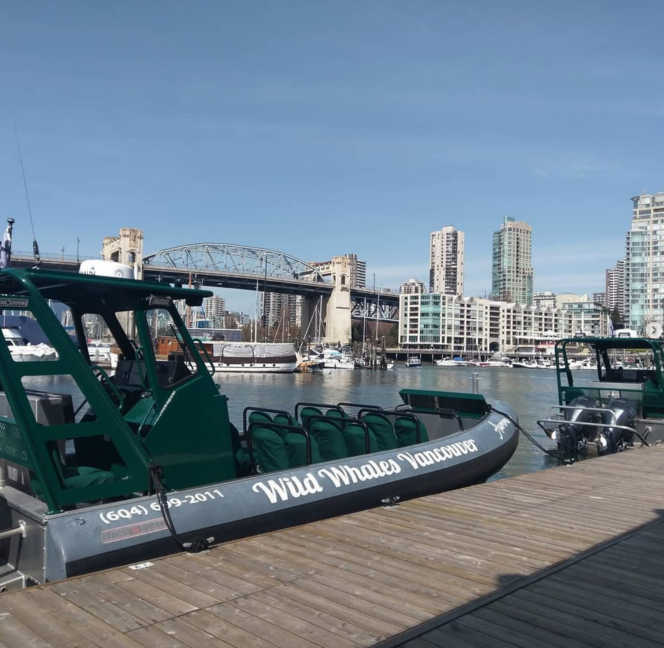
One of the Wild Whales Vancouver’s zodiac’s. Photo Wild Whales Vancouver/Instagram
If you prefer a boat with both indoor and outdoor viewing areas, book a tour on a larger boat. In general, the larger the boat, the more stable and comfortable the ride. Some companies use catamarans, which are the most stable.
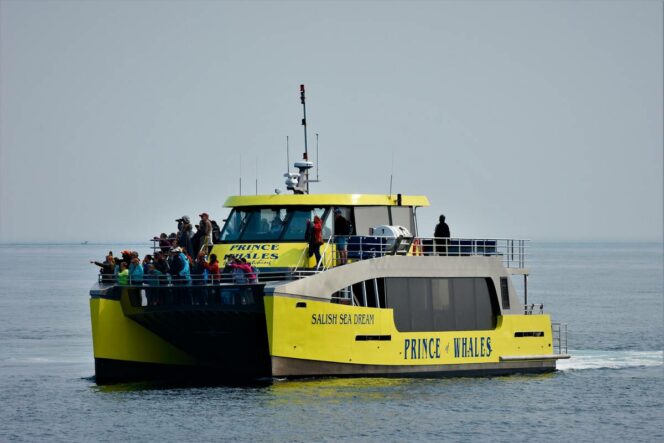
A large and stable catamaran tour. Photo: Destination Vancouver/Prince of Whales Whale Watching
You can book with Wild Whales Vancouver or Prince of Whales, both of which launch at Granville Island in Vancouver. Wild Whales Vancouver offers both zodiac tours and tours on boats with an indoor area. Prince of Whales has a large and stable catamaran.
Or start your trip from Richmond’s Steveston neighbourhood south of Vancouver with Vancouver Whale Watch or Seabreeze Adventures. They both provide a complimentary shuttle from downtown Vancouver. Both companies offer zodiac tours and Seabreeze Adventures also has a boat with an indoor area.
You can also go whale watching from Victoria. Eagle Wing Whale & Wildlife Tours, Orca Spirit Adventures, and Prince of Whales all offer tours that include a seaplane trip to and from Vancouver as well as whale watching in Victoria. You can choose from a variety of boat types from zodiacs to catamarans, depending on the tour company.
What to Bring Whale Watching
It can get chilly and wet on the water, so wear pants, bring a warm layer (like a fleece) and a rain jacket. It can also get pretty bright, so pack sunglasses, a hat, and sunscreen. If you’re taking a small, open boat, the tour operator will give you waterproof gear.
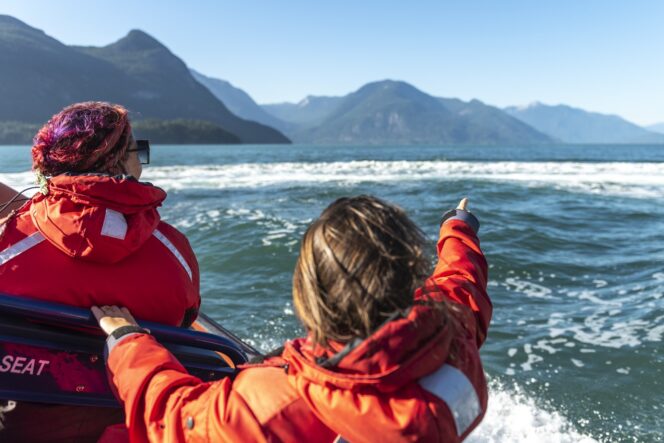
Photo: Destination Vancouver/Kate Milford
You’ll also want to bring a camera to capture photos of this amazing experience. Pack a waterproof dry bag to protect your camera on small boat tours. Some tour operators may have dry bags to lend if you don’t have your own. Most tour companies have binoculars you can borrow, but bringing your own is also a great idea. Leave your drone at home. Flying a drone near whales is illegal without a special permit.
While tour operators will do their best to keep you out of high winds and rough seas, and tour boats are designed to be comfortable and stable, the Salish Sea does what it wants. Most people don’t experience sea sickness, especially if they spend time outside in the fresh air. If you are concerned about sea sickness, bring motion sickness medication just in case.
Most tours are three to five hours long so you might want to pack snacks, water, or a light lunch. Some tours include snacks – check when you book.
Other Ways to Get Out on the Water and See Whales
While taking a whale watching tour greatly increases your chance of seeing these huge creatures, you might be lucky enough to have a chance encounter with whales, seals and other marine life while doing other water activities like kayaking. In that case, very strict regulations apply, which include keeping a safe distance. It is against the law to feed, swim, or interact with marine mammals. Read the Fisheries and Oceans Canada marine wildlife regulations to learn how to responsibly view these incredible animals.













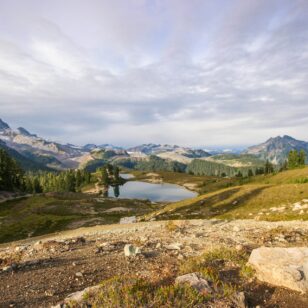



One Response to How to Go Whale Watching in Vancouver